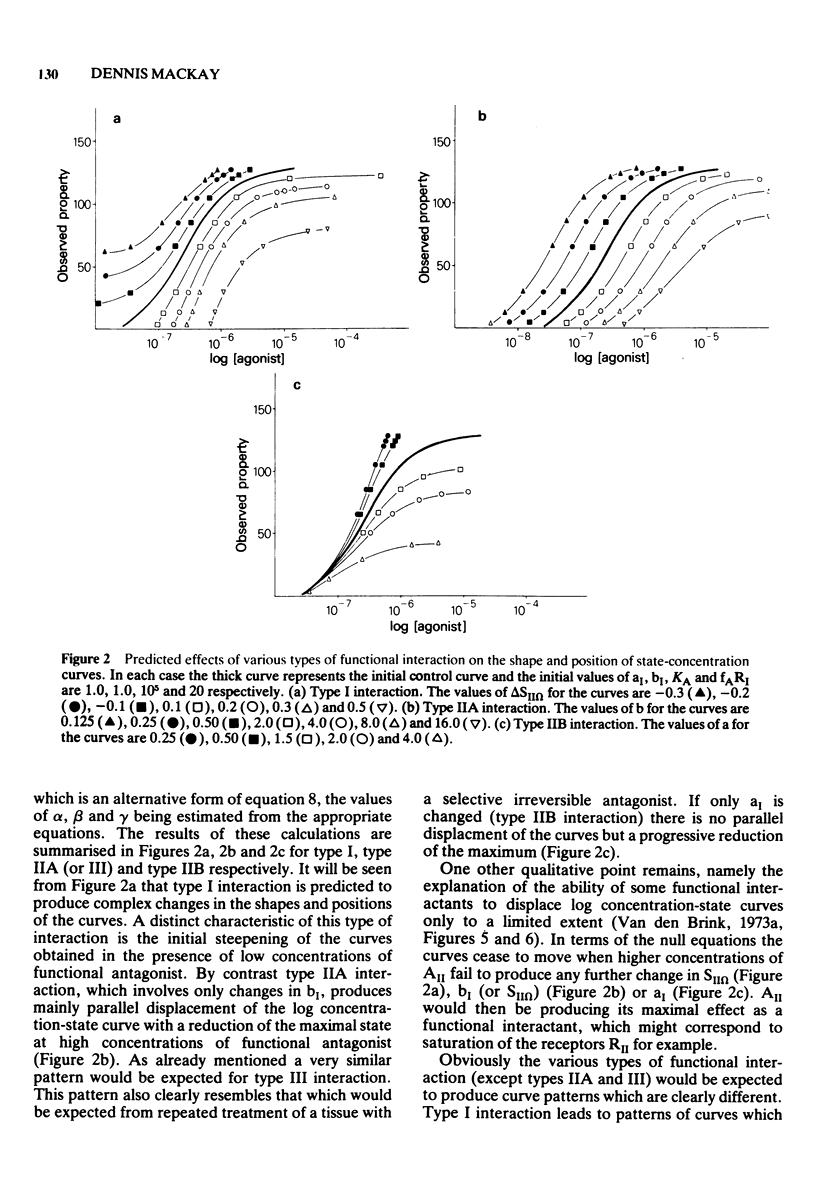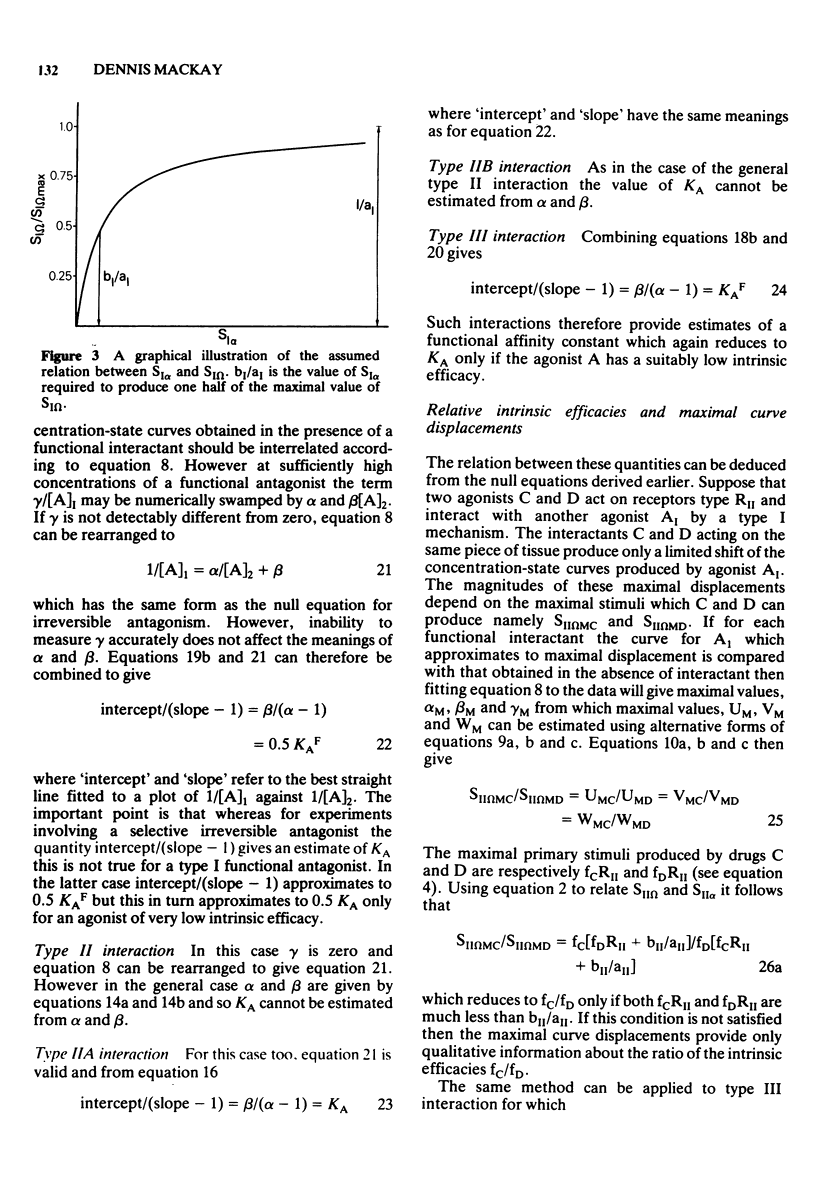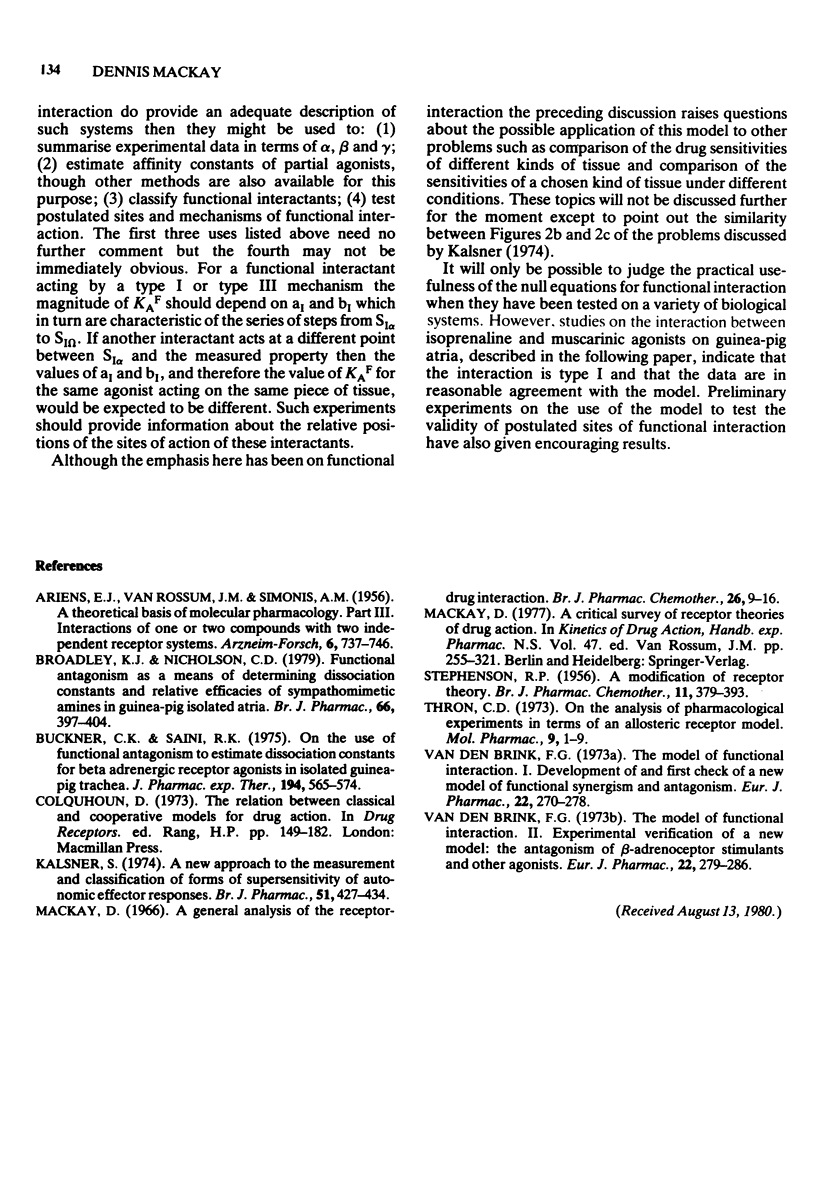Abstract
1 A method is described for deriving null equations for functional antagonism and synergism. These null equations relate together the concentrations of agonist required to produce equivalent states of a cell or tissue in the presence and in the absence of a functional interactant. 2 In one particular case the null equation leads to conclusions which are very similar to those reached by an earlier author who did not use the null method. However, the null equations give a clearer insight into the quantitative aspects of functional interaction. 3 It is concluded that the use of functional antagonism to estimate affinity constants and relative intrinsic efficacies of agonists has serious limitations. On the other hand, it may be possible to use the null equations, or similar principles, to test the validity of postulated mechanisms and sites of action of functional interactants.
Full text
PDF







Selected References
These references are in PubMed. This may not be the complete list of references from this article.
- ARIENS E. J., SIMONIS A. M., VAN ROSSUM J. M. A theoretical basis of molecular pharmacology. III. Interaction of one or two compounds with two independent receptor systems. Arzneimittelforschung. 1956 Dec;6(12):737–746. [PubMed] [Google Scholar]
- Broadley K. J., Nicholson C. D. Functional antagonism as a means of determining dissociation constants and relative efficacies of sympathomimetic amines in guinea-pig isolated atria. Br J Pharmacol. 1979 Jul;66(3):397–404. doi: 10.1111/j.1476-5381.1979.tb10844.x. [DOI] [PMC free article] [PubMed] [Google Scholar]
- Buckner C. K., Saini R. K. On the use of functional antagonism to estimate dissociation constants for beta adrenergic receptor agonists in isolated guinea-pig trachea. J Pharmacol Exp Ther. 1975 Sep;194(3):565–574. [PubMed] [Google Scholar]
- Kalsner S. A new approach to the measurement and classification of forms of supersensitivity of autonomic effector responses. Br J Pharmacol. 1974 Jul;51(3):427–434. doi: 10.1111/j.1476-5381.1974.tb10678.x. [DOI] [PMC free article] [PubMed] [Google Scholar]
- Mackay D. A general analysis of the receptor-drug interaction. Br J Pharmacol Chemother. 1966 Jan;26(1):9–16. doi: 10.1111/j.1476-5381.1966.tb01805.x. [DOI] [PMC free article] [PubMed] [Google Scholar]
- STEPHENSON R. P. A modification of receptor theory. Br J Pharmacol Chemother. 1956 Dec;11(4):379–393. doi: 10.1111/j.1476-5381.1956.tb00006.x. [DOI] [PMC free article] [PubMed] [Google Scholar]
- Thron C. D. On the analysis of pharmacological experiments in terms of an allosteric receptor model. Mol Pharmacol. 1973 Jan;9(1):1–9. [PubMed] [Google Scholar]
- van den Brink F. G. The model of functional interaction. I. Development and first check of a new model of functional synergism and antagonism. Eur J Pharmacol. 1973 Jun;22(3):270–278. doi: 10.1016/0014-2999(73)90026-5. [DOI] [PubMed] [Google Scholar]
- van den Brink F. G. The model of functional interaction. II. Experimental verification of a new model: the antagonism of beta-adrenoceptor stimulants and other agonists. Eur J Pharmacol. 1973 Jun;22(3):279–286. doi: 10.1016/0014-2999(73)90027-7. [DOI] [PubMed] [Google Scholar]


